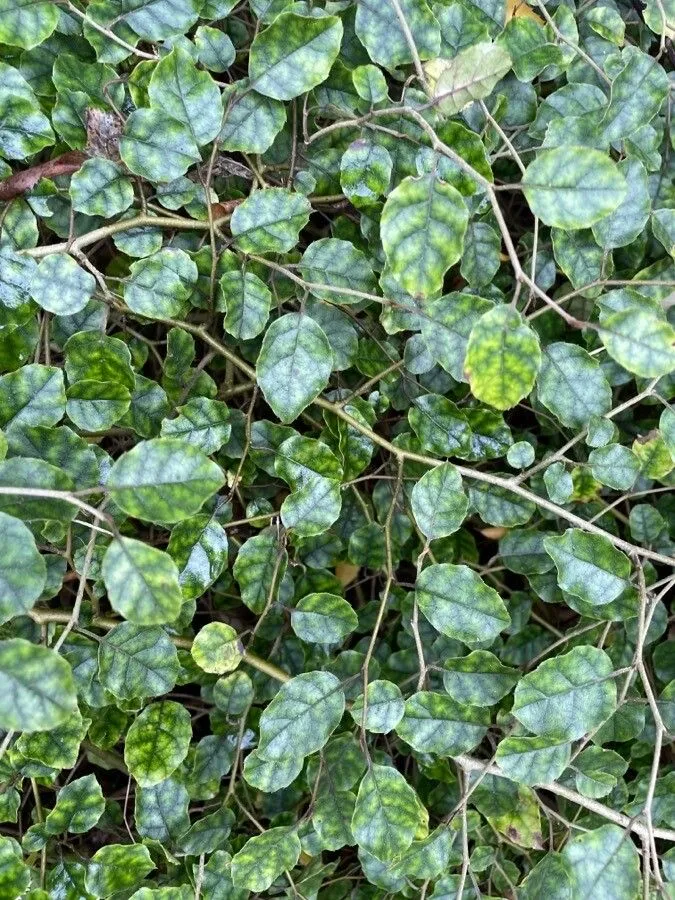
Author: J.R.Forst. & G.Forst.
Bibliography: Char. gen. pl. 34, t. 17a. 1776
Year: 1776
Status: accepted
Rank: species
Genus: Carpodetus
Vegetable: False
Observations: New Zealand (incl. Stewart I.)
The White Mapau, scientifically known as Carpodetus serratus, is a plant species indigenous to New Zealand, including Stewart Island. It belongs to the family Rousseaceae and was first formally described in 1776 by J.R. Forster and G. Forster, making its initial appearance in botanical literature in “Char. gen. pl.” with the reference of 34, t. 17a.
Carpodetus serratus is a notable species within New Zealand’s diverse flora. It typically thrives in the native forests, showcasing its adaptability to the region’s varied climatic conditions. The plant is commonly found in moist and shaded areas, which are prevalent in New Zealand’s temperate rainforest ecosystems.
Characteristically, the White Mapau is a small to medium-sized tree. It plays an integral role in the forest ecology, providing habitat and food sources for a variety of native birds and insects. Its foliage is distinctive, featuring serrated leaves that give the plant its specific epithet “serratus”. The leaves are a vibrant green, contributing to the dense canopy of the forests where the White Mapau grows.
Flowering mainly occurs in the spring and summer seasons, where clusters of small, white flowers adorning the branches turn the White Mapau into a striking sight. These flowers are known for their delicate beauty and subtle fragrance. Following the flowering period, the tree produces small, dark, berry-like fruits that are an important food resource for local wildlife.
Due to its ecological importance and attractive appearance, Carpodetus serratus is not only valued in natural forest settings but also cultivated in gardens and parks in New Zealand. Its hardy nature and aesthetic appeal make it a favored choice among those looking to enhance biodiversity and foster natural habitats.
In traditional uses, the White Mapau has been recognized for its bark and wood. Indigenous Māori communities have historically utilized various parts of the plant for medicinal purposes, further highlighting the tree’s significance beyond its ornamental and ecological values.
Overall, Carpodetus serratus represents a crucial element of New Zealand’s native flora, showcasing the intricate balance and beauty of the country’s natural landscapes.
Eng: white mapau
En: White mapau
Taken Dec 1, 1998 by Daniel Barthelemy (cc-by-nc)
Taken Dec 1, 1998 by Daniel Barthelemy (cc-by-nc)
Taken Dec 1, 1998 by Daniel Barthelemy (cc-by-nc)
Taken Dec 1, 1998 by Daniel Barthelemy (cc-by-nc)
Taken Feb 16, 2022 by David Hocken (cc-by-sa)
Taken Jul 29, 2021 by Samuel Rowe (cc-by-sa)
Taken May 12, 2020 by schmn j (cc-by-sa)
Taken May 12, 2020 by schmn j (cc-by-sa)
Taken Feb 16, 2022 by David Hocken (cc-by-sa)
Taken Feb 16, 2022 by David Hocken (cc-by-sa)
© copyright of the Board of Trustees of the Royal Botanic Gardens, Kew.
Family: Myrtaceae Author: (F.Muell.) K.D.Hill & L.A.S.Johnson Bibliography: Telopea 6: 402 (1995) Year: 1995 Status:…
Family: Rubiaceae Author: Pierre ex A.Froehner Bibliography: Notizbl. Bot. Gart. Berlin-Dahlem 1: 237 (1897) Year:…
Family: Sapindaceae Author: Koidz. Bibliography: J. Coll. Sci. Imp. Univ. Tokyo 32(1): 38 (1911) Year:…
Family: Asteraceae Author: A.Gray Bibliography: Pacif. Railr. Rep.: 107 (1857) Year: 1857 Status: accepted Rank:…
Family: Fabaceae Author: Medik. Bibliography: Vorles. Churpfälz. Phys.-Ökon. Ges. 2: 398 (1787) Year: 1787 Status:…
Family: Aspleniaceae Author: (Cav.) Alston Bibliography: Bull. Misc. Inform. Kew 1932: 309 (1932) Year: 1932…